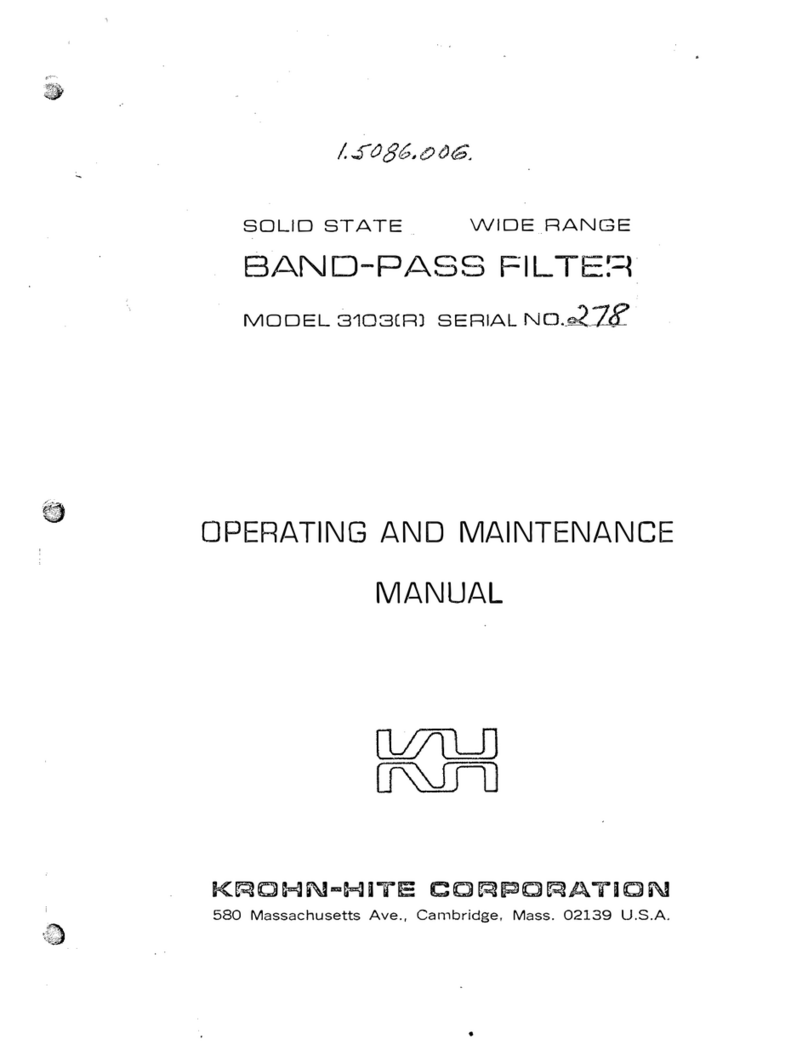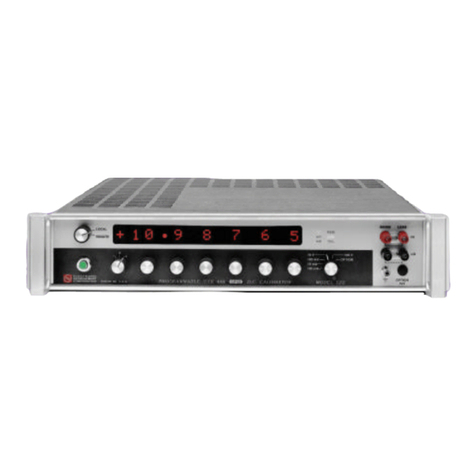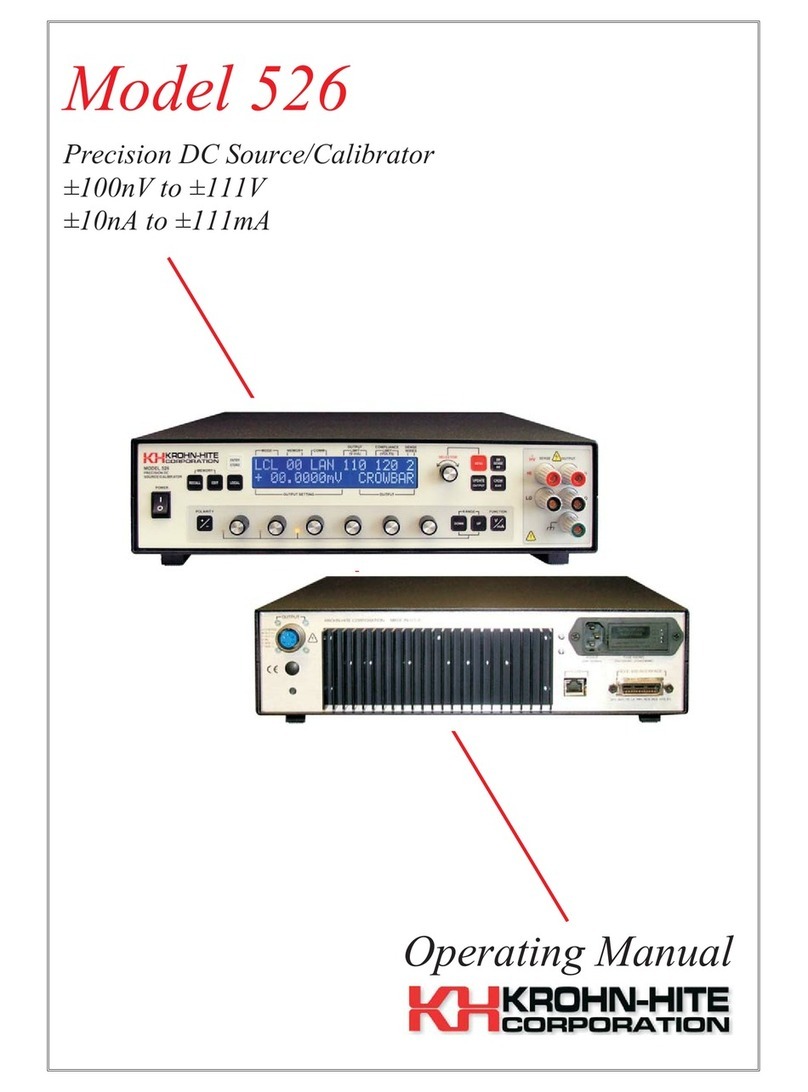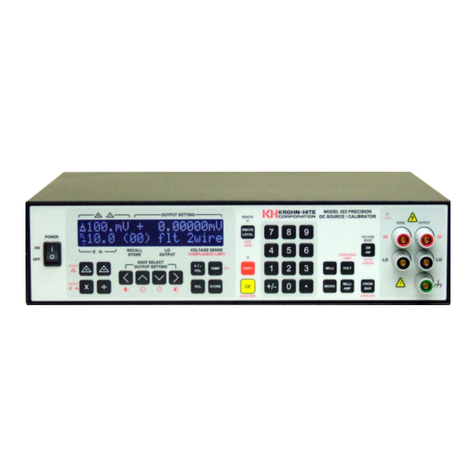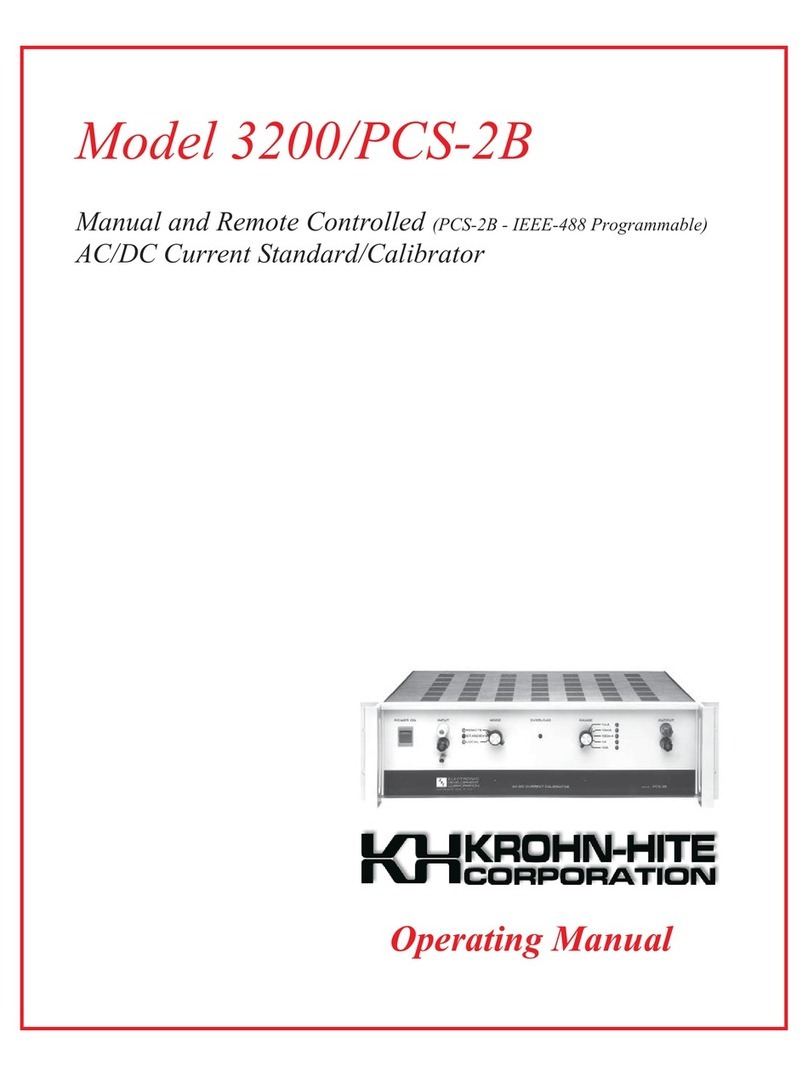
TABLE OF CONTENTS
SECTION 1 - GENERAL DESCRIPTION
1.1 INTRODUCTION ················································1-1
1.2 FUNCTION ···················································1-1
1.3 FILTER MODE ·················································1-1
1.4 AMPLIFIER MODE ···············································1-1
1.5 GENERAL ····················································1-2
1.6 OPTIONS·····················································1-2
SECTION 2 - OPERATION
2.1 INTRODUCTION ················································2-1
2.2 OPERATING PROCEDURE ··········································2-1
2.2.1 Channel Selection ············································2-1
2.2.2 All Channel Key Procedure ·······································2-1
2.2.3 Cutoff Frequency ············································2-1
2.2.4 Input Gain (Pre-Filter) ·········································2-1
2.2.5 Output Gain (Post-Filter) ········································2-1
2.2.6 Mode of Operation ···········································2-1
2.2.7 Filter Type ···············································2-1
2.2.8 Clear Entry Operation ··········································2-2
2.2.9 Storing Set-Ups ·············································2-2
2.2.10 Recalling Set-Ups ············································2-2
2.2.11 Second Function Keys Operation ······························2-2
2.2.12 Input Connectors ······································2-2
2.2.13 DC Level Adjust (rear panel) ································2-3
2.3 FILTER OPERATION ··············································2-3
2.3.1 Introduction ···············································2-3
2.3.2 Variable Band-Pass ···········································2-3
2.3.3 Amplitude Response ··········································2-3
2.3.4 Phase Response ·············································2-3
2.3.5 Group Delay···············································2-4
2.3.6 Transient Response ···········································2-4
i
Model 38 Table of Contents

















